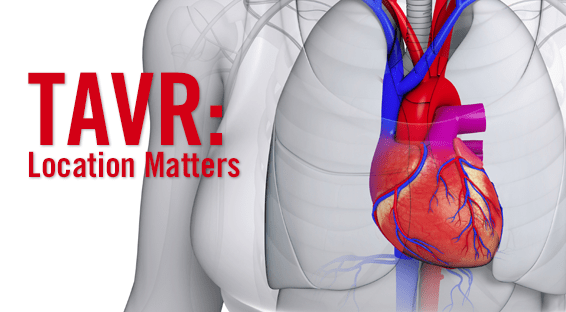Transcatheter aortic-valve replacement (TAVR) procedures were initially developed to be a fully percutaneous alternative to open surgical replacement. As these procedures have been approved globally, regulators and expert consensus documents have required getting approval from the heart team, which consists of an interventional cardiologist and cardiac surgeon and several other team members, before a transcatheter approach can be considered. They also required hospitals offering TAVR to have an active valvular heart disease program with at least two experienced cardiac surgeons.
In 2012, a consensus documents was released listing percutaneous valve replacement as one of the procedures that is well suited for a hybrid cardiac catheterization laboratory/operating room (OR). “Most TAVR procedures in the United States are done in hybrid rooms, but in other parts of the world, these procedures are being performed commonly in catheterization labs,” says Vasilis Babaliaros, MD. “This is important because the costs associated with TAVR are high.” He adds that the cost of the procedure is largely due to the cost of the device.
New Research
In a small study published in JACC Cardiovascular Interventions, Dr. Babaliaros and colleagues reviewed outcomes and costs in 70 patients who underwent transfemoral TAVR in a cath lab without general anesthesia or transesophageal echocardiography and compared this data with 72 patients receiving the same procedure in standard hybrid ORs. Following cath lab procedures, a significant portion of patients were transferred to a regular telemetry floor, whereas all the post-procedure hybrid room patients were transferred to the ICU. “We studied differences in transfemoral TAVR outcomes and costs on the physical environment where the procedures were performed as well as the concomitant resources that were utilized,” adds Dr. Babaliaros.
According to the results, TAVR could be performed in cath labs rather than hybrid ORs with substantial cost savings and no worsening of outcomes. All procedures in cath labs were successful, with only one patient requiring intubation. Conversely, three patients treated in hybrid ORs had a procedure-related death. Procedure time, total ICU time, hospital length of stay, and costs were all significantly less among patients treated in cath labs. In addition, 30-day mortality and stroke/transient ischemic attack rates were not different between groups.
More Data Needed
“Our study shows that TAVR can be performed safely in cath labs by experienced teams and achieve the same outcomes with lower costs,” Dr. Babaliaros. “If we can generalize these findings to medium volume centers throughout the U.S., we may be able to improve the cost-effectiveness of care without sacrificing quality.” More information is needed on the optimal training for physicians to perform TAVR in cath labs. Longer-term, multicenter data are also needed. As this data emerge, there is hope that TAVR procedures will shift from being performed mostly in hybrid ORs to instead being done in cath labs in the future.


